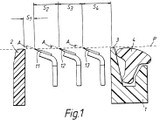In re Fisher: EST Patentability Redux
By Donald Zuhn, Ph.D. (Patently-O Guest Author).
On Tuesday, May 3, 2005, the Federal Circuit will hear In re Fisher, in which the Court will address the utility requirement for the first time since the Patent Office set forth revised Utility Examination Guidelines in January 2001. Specifically, in Fisher, the issue of patentable utility is being raised with respect to nucleic acid molecules. In commenting on the possible importance of this case, Harold Wegner has described Fisher as having "the potential of being either the single most important pharmaceutical patent case in recent years – or a yawn." Amicus briefs filed by recognized biotech and pharmaceutical companies such as Affymetrix, Eli Lilly, and Genentech in support of the Board’s decision in Ex parte Fisher suggest that it may be the former as opposed to the latter.
The particular controversy presented in Fisher can be traced back as far as 1991, when a group of NIH investigators led by J. Craig Venter sought to protect thousands of DNA sequences corresponding to portions of expressed genes. Venter called these gene fragments expressed sequence tags, or ESTs. Venter’s group sought to protect not only the ESTs themselves, but also the full-length sequences from which the ESTs were derived and the protein products encoded by the full-length sequences, without first determining the biological function of the encoded protein products. In several applications filed on its ESTs, the NIH asserted a number of utilities, including the design of oligonucleotides for use in chromosomal analysis, PCR amplification, and recovering the corresponding full-length gene. After receiving a second rejection on its initial filing, the NIH abruptly abandoned its attempts to protect the ESTs, and withdrew all of its pending EST applications from consideration.
While the withdrawal of these applications temporarily quieted the debate surrounding EST patentability, the Patent Office again stoked the fires of controversy in 1995, when it published new Utility Examination Guidelines. The new Guidelines removed some of the obstacles to EST patenting by only requiring that an applicant assert a utility that was "specific" and "credible." The new Guidelines had thus omitted the requirement that the assertion of utility also be "substantial," as set forth by the Supreme Court in 1966 in Brenner v. Manson. In 1997, the Patent Office further declared that since ESTs were acknowledged to have utility apart from the full-length sequences from which they were derived, an applicant would no longer be prevented from securing protection for an EST by the failure to specify the function of the full-length sequence from which that EST was derived.
The Patent Office reversed course again in 2001 when it published revised Utility Examination Guidelines, reinstating the Brenner substantial utility prong. The revised Guidelines now required that an applicant assert a specific and substantial utility for the claimed invention that would be considered credible by a person of ordinary skill in the art. The Patent Office also issued Revised Interim Utility Guidelines Training Materials, which provided Examples indicating how the revised Guidelines were to be applied to thirteen different types of biochemical subject matter, including ESTs, as well as definitions of the three utility prongs. In particular, the Training Materials defined "specific utility" as utility that is specific to the subject matter claimed, as contrasted with a general utility that would be applicable to the broad class of the invention; "substantial utility" as utility having a "real world" use; and "credible utility" as utility that is believable to a person of ordinary skill in the art based on the totality of evidence and reasoning provided.
In the appeal to be heard Tuesday, appellants Dane Fisher and Raghunath Lalgudi (employees of Monsanto Co., the real party in interest) seek to reverse the Board’s decision affirming the final rejection of a claim directed to five ESTs isolated from maize leaf tissue. The five ESTs constitute only a small portion of the 4,013 sequences that appellants originally claimed and an even smaller portion of the 32,236 sequences that appellants disclosed in their application. Appellants also asserted a number of utilities for the claimed ESTs in their application, including the use of the ESTs to identify polymorphisms (i.e., alternate forms, or alleles, of the claimed sequences), to design oligonucleotide probes or primers for use in isolating DNA sequences from other plants and organisms, and to measure mRNA expression levels in plant cells using microarray technology.
The Board, in Ex parte Fisher, analyzed Brenner and subsequent CCPA and CAFC decisions in In re Kirk, In re Ziegler, In re Jolles, Cross v. Iizuka, and In re Brana, and determined that "[r]ather than setting a de minimis standard, Section 101 requires a utility that is ‘substantial’," or in the words of the Brenner court, "one that provides a specific benefit in currently available form." The Board then examined appellants’ asserted utilities and determined that none of the claimed ESTs provided a specific benefit in its currently available form. In particular, with regard to appellants assertion that the claimed ESTs could be used to measure mRNA expression levels in plant cells using microarray technology, the Board declared that "the asserted utility of the claimed nucleic acid – as one component of an assay for monitoring gene expression – does not satisfy the utility requirement of Section 101."
In briefing the issues before the Federal Circuit, appellants argue that the Board erred in concluding that an EST is "subject to a heightened standard of utility . . . that hinges upon some undefined ‘spectrum’ of knowledge about the function of the gene that corresponds to the EST." Appellants also contend that the Board erred in concluding that the claimed ESTs lack patentable utility "despite the undisputed existence of eight scientifically useful applications for the claimed ESTs and a commercially successful industry built upon the sale and licensing of ESTs corresponding to genes of unknown function, just like those at issue here." In arguing against the Patent Office’s application of a "heightened standard" of utility in this case, appellants note that the Patent Office has set forth "three substantially different constructions of the utility standard over the last decade alone," and that the Board has adopted a test "so ambiguous and impracticable that even the PTO cannot articulate with any reasonable certainty when the claimed ESTs – or any other EST – might be entitled to patent protection." Appellants also contend that the Patent Office has applied the wrong test in determining whether there is an assertion of specific utility, since "the specific utility prong only requires the existence of an identifiable benefit for the claimed invention; it does not require a benefit that is unique to the claimed invention."
The Patent Office, on the other hand, denies that appellants’ ESTs have been subjected to a heightened standard, arguing instead that appellants merely failed to assert a specific and substantial utility for the claimed ESTs that would be considered credible by a person of ordinary skill in the art. In its brief, the Patent Office often focuses on appellants’ failure to satisfy the specific utility prong, arguing, for example, that appellants’ asserted utilities "would apply not only to the over 32,000 ESTs Fisher discloses, and to the over 600,000 ESTs disclosed in Monsanto’s [six] related appeals, but also to any ESTs derived from any organism." In particular, the Patent Office counters appellants’ argument that because each EST only specifically binds to its complement, the specific sequence of each EST makes its use as a probe or primer specific, by stating that "there is no specific reason for using the EST to bind its complement," and therefore, "[t]o the extent that more sequence data could be acquired by using the ESTs as probes, that result would likely be true for any scrap of DNA derived from nature." Finally, in responding to appellants’ assertion that ESTs have a real world value as part of a multi-billion dollar industry, the Patent Office contends that "batches of ESTs of unknown significance are sold for the purpose of finding targets worthy of further development, not because the individual ESTs have any specific currently available benefit."
NOTE: This post was written by patent attorney Donald Zuhn, PhD. Don is a true expert in cutting edge biotech patent law and practices both prosecution and litigation at MBHB LLP in Chicago. (zuhn@mbhb.com). His article "DNA Patentability: Shutting the Door to the Utility Requirement," published in the summer 2001 issue of the John Marshall Law Review, contains a more thorough discussion of the history of the utility requirement, particularly with respect to the patentability of DNA sequences.
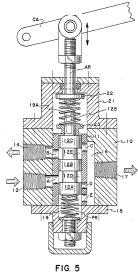 Abbey v. Mercedes Benz of North America (Fed. Cir. 2005) (NONPRECEDENTIAL)
Abbey v. Mercedes Benz of North America (Fed. Cir. 2005) (NONPRECEDENTIAL)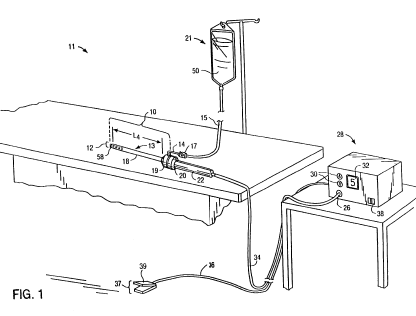
 Toney v. L’Oreal USA (7th Cir. 2005) (CV 03–2184).
Toney v. L’Oreal USA (7th Cir. 2005) (CV 03–2184).  In a bundle of sad news, it appears that late last week, patent attorney Jackie Duke of Houston shot and killed patent agent Michael Hartmann before killing himself. Hartmann was an in-house counsel at Cooper Cameron and head of the patents department. Duke also worked as a consultant for the Cameron patent department. The shooting occurred at Cooper Cameron headquarters in Texas.
In a bundle of sad news, it appears that late last week, patent attorney Jackie Duke of Houston shot and killed patent agent Michael Hartmann before killing himself. Hartmann was an in-house counsel at Cooper Cameron and head of the patents department. Duke also worked as a consultant for the Cameron patent department. The shooting occurred at Cooper Cameron headquarters in Texas.  Insurance litigator
Insurance litigator 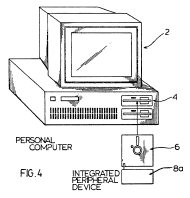 PC Connector Solutions v. SmartDisk (Fed. Cir. 2005).
PC Connector Solutions v. SmartDisk (Fed. Cir. 2005). 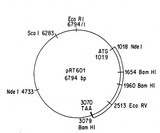 Clontech Laboratories v. Invitrogen Corp. (Fed. Cir. 2005).
Clontech Laboratories v. Invitrogen Corp. (Fed. Cir. 2005). 